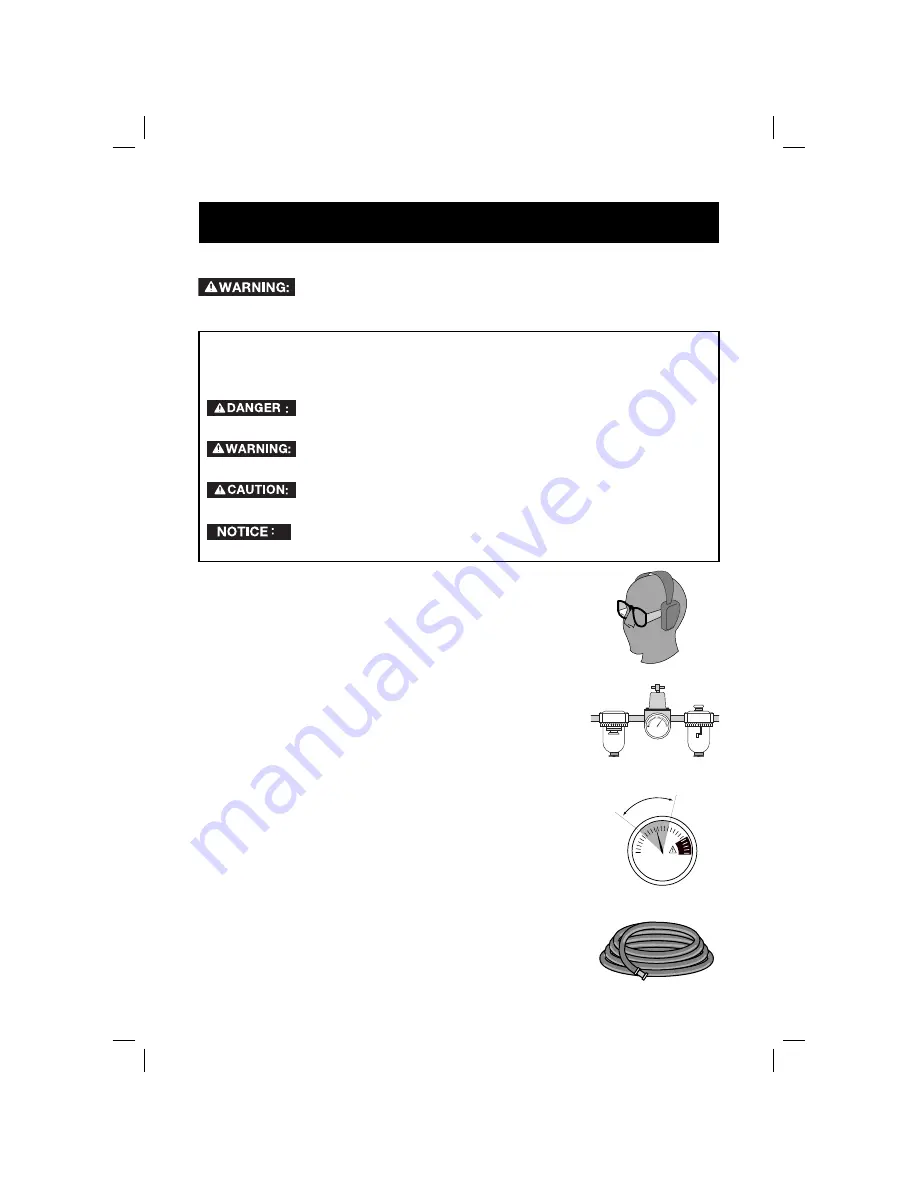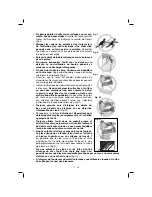
2 - ENG
IMPORTANT SAFETY INSTRUCTIONS
FOR PNEUMATIC TOOLS
SAVE THESE INSTRUCTIONS
When using any pneumatic tool, all safety precautions, as outlined
below, should be followed to avoid the risk of death or serious injury. Read all instructions
before operating the tool.
DEFINITIONS - SAFETY GUIDELINES
The definitions below describe the level of severity for each signal word. Please read the
manual and pay attention to these symbols.
Indicates an imminently hazardous situation which, if not avoided,
will
result in
death
or
serious injury
.
Indicates a potentially hazardous situation which, if not avoided,
could
result in
death or serious injury
.
Indicates a potentially haz ard ous situation which, if not avoided,
may
result in
minor or mod er ate injury
.
Indicates a practice
not related to personal injury
which, if not avoid-
ed,
may
result in p
roperty damage.
• Actuating tool may result in flying debris, collation
material, or dust which could harm operator’s eyes.
Operator and others in work area MUST wear safety
glasses with side shields.
These safety glasses must
conform to ANSI Z87.1 requirements (approved glasses
have “Z87” printed or stamped on them). It is the employer’s
responsibility to enforce the use of eye protection equipment
by the tool operator and other people in the work area.
(Fig. A)
• Always wear appropriate personal hearing and other
protection during use. Under some conditions and
duration of use, noise from this product may contribute
to hearing loss.
(Fig. A)
• Use only clean, dry, regulated air. Conden sation from an air
compressor can rust and damage the internal workings of the
tool. (Fig. B)
• Regulate air pressure.
Use air pressure compatible with
ratings on the nameplate of the tool.
[Not to exceed
100 psi (6.9 bar).] Do not connect the tool to a compressor
rated at over 175 psi. The tool operating pressure must
never exceed 175 psi even in the event of regulator failure.
(Fig. C)
•
Only use air hose that is rated for a maximum working
pressure of at least 150 psi (10.3 bar) or 150% of the
maximum system pressure, which ever is greater.
(Fig. D)
70 psi
4.9 bar
Fig. C
Fig. B
Fig. A
Fig. D
































